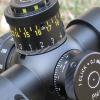Ok, I have shot quite a bit of medium range rifle (350-500 yds), generally just using typical holdover. I have a Savage 308 LE with a ballistically matched Leupold VX-3. It is great since I just dial it to 700 and that is where it hits.
Subsequently, it does not teach you much about ballistic calculation. So, now, I have a great Mod 70 in 300 Win Mag. with a VX-3 with CDS elevation dial.
Question is:
At 700 yards, my 168 gr bullet will drop 96 inches. My chart shows to come up 52 clicks, which obiously is around 13 inches. So, I can't get my head around how I cover 96 inches with adjustments of only 13 inches/moa.
Maybe I should just bet a custom turret engraved...haha
Thanks
Subsequently, it does not teach you much about ballistic calculation. So, now, I have a great Mod 70 in 300 Win Mag. with a VX-3 with CDS elevation dial.
Question is:
At 700 yards, my 168 gr bullet will drop 96 inches. My chart shows to come up 52 clicks, which obiously is around 13 inches. So, I can't get my head around how I cover 96 inches with adjustments of only 13 inches/moa.
Maybe I should just bet a custom turret engraved...haha
Thanks


